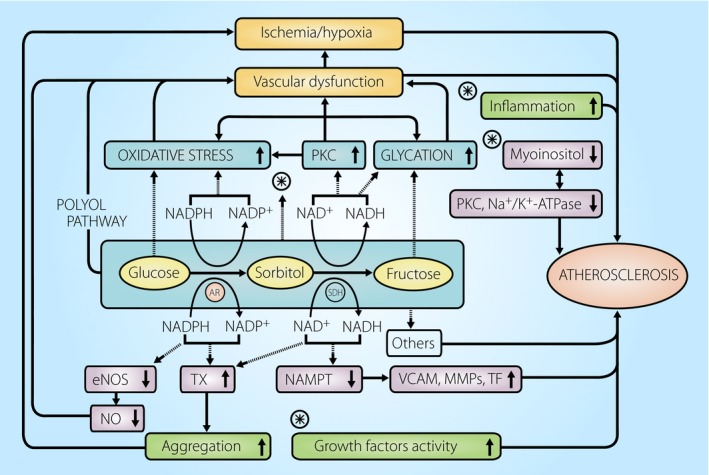Figure 1.

Schematic representation of the possible role of the polyol pathway in diabetes atherosclerosis. The polyol pathway consists of two steps: glucose is first reduced to sorbitol by the enzyme, aldose reductase (AR), and the resulting sorbitol is then changed to fructose by sorbitol dehydrogenase (SDH). During euglycemia, the utilization of glucose through the polyol pathway accounts for less than 3% of glucose consumption in cells. However, during hyperglycemia, total consumption of glucose through this pathway represents up to 30%137, resulting in the enhancement of glucose utilization through metabolic cascade shown. Thus, hyperglycemia‐induced polyol pathway hyperactivity might contribute to developing not only microvascular disease, but also atherosclerosis in the patients with diabetes. eNOS, endothelial nitric oxide synthase; MMP, matrix metalloproteinases; NAMPT, nicotineamide phosphoribosyl transferase; NO, nitric oxide; PKC, protein kinase C; TF, tissue factor; TX, thromboxane; VCAM, vascular cell adhesion molecule.
